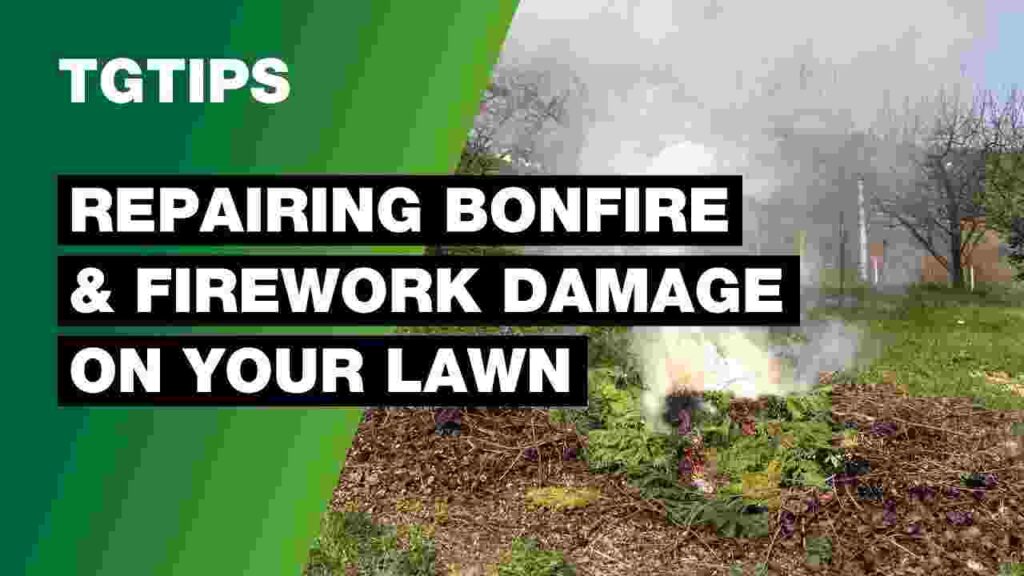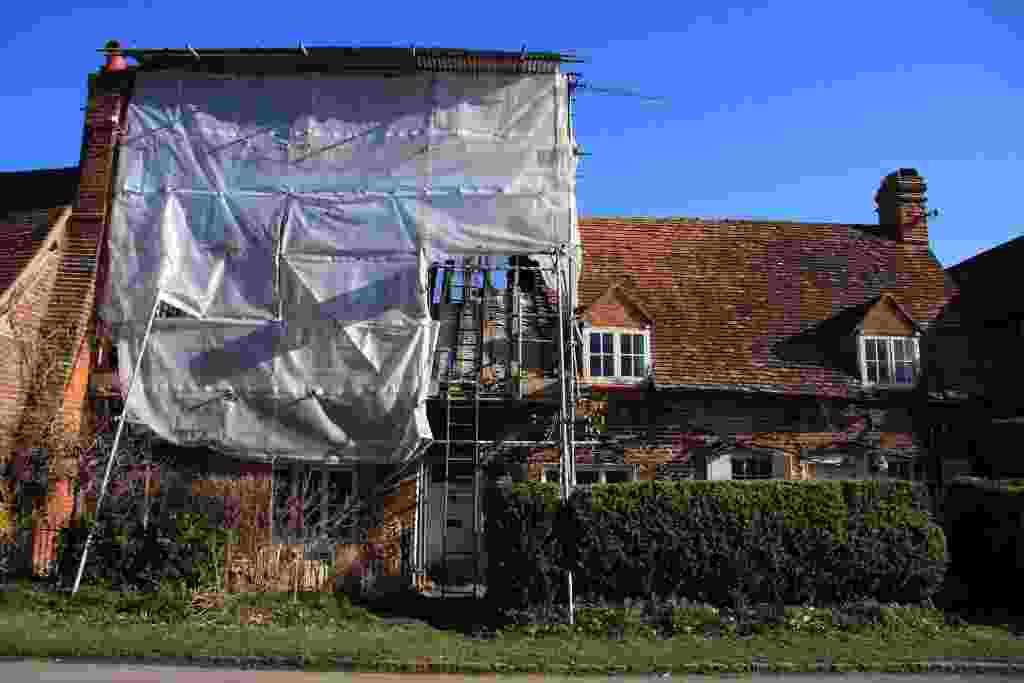Blogs
Rebuilding Your Garden After FIRE Damage
Dealing with the aftermath of a fire in your garden can be tough, but don’t worry – nature has a remarkable way of bouncing back. In this blog post, Intensa Dry Water Damage Restoration walk you through the steps to revive your outdoor sanctuary, from safety precautions and debris clearing to soil rejuvenation and selecting resilient plants. Your garden might have taken a hit, but with a bit of love and patience, we’ll have those blooms and greenery back in no time. Let’s roll up our sleeves and get your garden on the road to recovery!
Assessment and Safety Precautions

Before embarking on the journey of garden restoration, it is crucial to conduct a thorough assessment of the damage. Begin by prioritizing safety and assessing potential hazards. Check for unstable trees, weakened structures, and any remnants of hazardous materials. It is advisable to consult with professionals, such as arborists and structural engineers, to ensure that your garden is safe for restoration activities. During the assessment and safety precautions phase of rebuilding your garden after fire damage, professional mitigation services play a crucial role. These experts provide invaluable insights into potential hazards, ensuring a comprehensive evaluation of the landscape and enabling homeowners to make informed decisions that prioritize safety during the restoration process.
- Safety First: Prioritize safety assessments before anything else.
- Consult Professionals: Engage arborists and engineers to inspect for unstable trees and structural damage.
- Hazard Identification: Identify and address potential hazards, including hazardous materials.
- Clearing Debris: Carefully remove charred plants and fallen branches, ensuring a safe work environment.
- Salvaging Materials: Save salvageable items for potential reuse, such as rocks, pavers, and ornaments.
- Professional Guidance: Seek expert advice to ensure the garden is safe for restoration activities.
Clearing Debris and Salvaging
Once safety concerns have been addressed, the next step is to clear debris from the affected area. Remove charred plants, fallen branches, and any other fire-related debris carefully. Salvage whatever plants may have survived, even if they appear damaged. Some resilient species can bounce back with proper care and attention. Identify salvageable materials for potential reuse in the rebuilding process, such as rocks, pavers, or garden ornaments that may have withstood the fire.
Clearing debris and salvaging materials is a vital step in the garden rebuilding process after fire damage. Start by meticulously removing charred plants and fallen branches, creating a clean slate for your garden’s rebirth. Take care to dispose of the debris properly, following local regulations and environmental guidelines.
Simultaneously, salvaging materials that withstood the fire can be a cost-effective and sustainable approach to the restoration. Rocks, pavers, or garden ornaments that may have weathered the flames can be repurposed, adding a touch of familiarity to the rejuvenated landscape. By combining thorough debris clearing with resourceful salvage efforts, you not only create a safer environment but also lay the groundwork for a more sustainable and resilient garden.
Soil Assessment and Improvement
Fire can significantly impact the soil structure, fertility, and microbial activity in your garden. Conduct a soil test to assess nutrient levels, pH, and organic matter content. Based on the results, amend the soil with organic matter, compost, and appropriate fertilizers to rejuvenate its health. Consider using soil conditioners to improve water retention and drainage, ensuring optimal conditions for new plantings.
Conducting a thorough soil assessment is paramount after fire damage. Perform a soil test to gauge nutrient levels, pH, and organic matter. Based on the results, amend the soil with organic matter, compost, and suitable fertilizers to restore its health. This proactive step ensures an optimal foundation for new plantings, promoting their growth and resilience in the rejuvenation process.
Selecting Fire-Resistant Plants
When replanting your garden, choose plants that are resilient and fire-resistant. Native plants, adapted to the local climate and soil conditions, often exhibit greater resistance to fire. Additionally, select plants with high moisture content and low flammability to create a defensible space around your property. Consult with local nurseries or extension services for expert advice on suitable plant choices for your region.
When rebuilding a garden post-fire, choosing fire-resistant plants is key to creating a resilient and sustainable landscape. Opt for native species adapted to your local climate, as they often possess natural defenses against fire. Prioritize plants with high moisture content and low flammability, reducing the risk of future damage. Consult with local nurseries or extension services for expert guidance on selecting a diverse range of fire-resistant plants that will not only thrive but also contribute to a safer and more vibrant garden environment.
Designing Defensible Spaces
Incorporating defensible space design principles is crucial to reducing the risk of future fire damage. Create zones around your property that are strategically landscaped to act as firebreaks. This may involve incorporating non-flammable materials, such as gravel or stone, and spacing plants at safe distances. Maintain these defensible spaces through regular pruning, weed control, and vigilant landscape management.
In the process of rebuilding your garden after fire damage, designing defensible spaces plays a crucial role in minimizing future risks. Incorporate fire-resistant materials and strategically landscape zones to act as effective firebreaks. To ensure comprehensive restoration, consider engaging professional fire damage restoration services. These experts can not only assess and address the immediate impact of the fire but also provide valuable insights into creating a resilient landscape that aligns with defensible space principles. Collaborating with restoration services ensures a holistic approach to rebuilding, combining safety measures with expert guidance for a secure and thriving garden.
Implementing Irrigation and Watering Strategies
Establishing an efficient irrigation system is vital for the survival and health of your garden post-fire. Consider installing drip irrigation to deliver water directly to the root zones of plants, minimizing water waste and maximizing efficiency. Mulching is also essential for retaining soil moisture and preventing erosion. Implementing these strategies will help your garden recover and thrive in the wake of fire damage.
Implementing effective irrigation and watering strategies is pivotal in rejuvenating a garden post-fire. Installing a drip irrigation system delivers water directly to plant roots, minimizing water waste and maximizing efficiency. This method ensures optimal hydration, crucial for the recovery of your greenery. Additionally, mulching helps retain soil moisture, preventing erosion and promoting a healthier soil structure. By prioritizing these watering strategies, you provide your garden with the necessary hydration and support for a successful comeback after the challenges posed by fire damage.
Patience and Ongoing Maintenance

Rebuilding a garden after fire damage is a gradual process that requires patience and ongoing maintenance. Recognize that the recovery timeline may vary for different plant species, and some areas may take longer to regain their former vitality. Regularly monitor the health of your garden, addressing issues promptly and adjusting your maintenance practices as needed. With time and dedicated care, your garden can once again flourish and bring joy to your outdoor living space.
In the journey to rebuild your garden after fire damage, exercising patience and committing to ongoing maintenance are vital. While tending to your garden’s gradual recovery, consider enlisting the expertise of reconstruction services. These professionals not only facilitate the initial rebuilding process but also offer guidance on long-term maintenance strategies. By partnering with reconstruction services, you ensure a comprehensive approach to your garden’s revival, combining your patience and care with the specialized knowledge of professionals who can contribute to a resilient and flourishing outdoor space that stands the test of time.
FAQs
How do you restart a garden?
- Clear some space. First, remove the weeds, as well as any diseased or dead plants.
- Restore order with landscaping. Now you only have the greenery in your garden that you wish to keep, you can start creating some order.
- Introduce new plants slowly.
How does fire respond to its environment?
A site has to be wet enough to grow fuels and dry enough to ready them to burn, and how this plays out — and combines with ignition — affects the fire’s characteristics. The regime concept is vital, because organisms are no more “adapted to fire” (or not) than they are to water: they adapt to a pattern of burning.
How does fire affect plants?
Fire intensity affects plant response to fire and is often used in the management of woody species. The bark of older trees and shrubs commonly insulates the plant from the heat of low-intensity fires, but smaller stems and seedlings are killed. High intensity fire, however, can top-kill the larger trees.
What are the consequences of fire?
In addition to producing smoke, fire can incapacitate or kill by reducing oxygen levels, either by consuming the oxygen, or by displacing it with other gases. Heat is also a respiratory hazard, as superheated gases burn the respiratory tract. When the air is hot enough, one breath can kill.
What are the main causes of fire?
electricity supply or other electrical equipment and appliances (including plugs, lighting and cables, washing machines, dishwashers and tumble dryers) smoking or smoking-related materials (including cigarettes, matches and lighters).
Conclusion
In conclusion, the journey of rebuilding your garden after fire damage demands resilience, patience, and a thoughtful approach. As you navigate safety precautions, clear debris, assess soil, and select resilient plants, remember that time and care are essential ingredients in this process. Embrace the opportunity to create a garden that not only recovers but evolves into a more fire-resistant and sustainable haven. Enlist the support of professionals for specialized guidance, and with ongoing maintenance, watch your outdoor oasis gradually transform from the ashes into a resilient, thriving testament to nature’s remarkable ability to rejuvenate even in the face of adversity.

